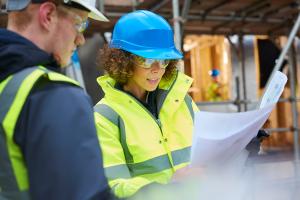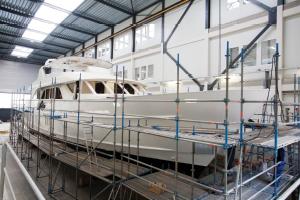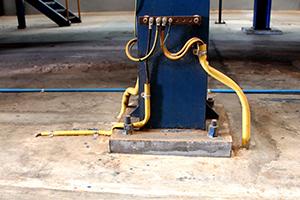Understanding the role of a competent person

For the potential risks and exposures on your jobsite, you should be aware that it is your responsibility to designate a competent person to oversee the safety of your work crews.
What is a “competent person”?
Some Occupational Safety and Health Administration (OSHA) standards have specific requirements for a competent person, including: excavation work, working at heights, when exposed to silica, daily crane inspections and demolition work. The competent person must be familiar with the hazards of the work and the proper controls to use for employee protection. For example, if the jobsite includes workers being exposed to heights, a competent person must provide training to workers on fall hazards and the equipment or other controls that will be used to protect them from falls. While there is no set amount of training time or certification required, it is imperative that a competent person has adequate training and knowledge about fall hazards and equipment before providing training to others. The determination of whether an employee is capable of being a competent person rests completely on their employer.
A COMPETENT PERSON is defined as “one who is capable of identifying existing and predictable hazards in the surroundings or working conditions which are unsanitary, hazardous, or dangerous to employees, and who has authorization to take prompt corrective measures to eliminate them.”*
Be sure the designated competent person:
- Understands the hazards of the work and the applicable OSHA standards
- Has knowledge of the selection, use and installation of controls to use to protect workers from the hazards they face
- Is given the authority to correct hazards and stop work, if needed, to protect employees
- Can provide training to other employees and answer frequently asked safety questions
- Is periodically retrained to help maintain the highest and most current safety knowledge
Your Hanover resources
Hanover policyholder benefits include not only our comprehensive coverage, but also access to risk solutions partner services, including:
- Equipment theft prevention and recovery products
- Background check services
- Disaster and recovery planning services
- Industry-specific training resources
- Alarm system testing and maintenance services
- Automatic sprinkler testing and maintenance services
Visit our Hanover construction risk solutions page to learn more about our risk solutions partners.
This material is provided for informational purposes only and does not provide any coverage or guarantee loss prevention. The examples in this material are provided as hypothetical and for illustration purposes only. The Hanover Insurance Company and its affiliates and subsidiaries (“The Hanover”) specifically disclaim any warranty or representation that acceptance of any recommendations contained herein will make any premises, or operation safe or in compliance with any law or regulation. By providing this information to you, The Hanover does not assume (and specifically disclaims) any duty, undertaking or responsibility to you. The decision to accept or implement any recommendation(s) or advice contained in this material must be made by you.
LC 2017-409
Related resources
Understanding the role of a competent person
For the potential risks and exposures on your jobsite, you should be aware that it is your responsibility to designate a competent person to oversee the safety of your work crews.
What is a “competent person”?
Some Occupational Safety and Health Administration (OSHA) standards have specific requirements for a competent person, including: excavation work, working at heights, when exposed to silica, daily crane inspections and demolition work. The competent person must be familiar with the hazards of the work and the proper controls to use for employee protection. For example, if the jobsite includes workers being exposed to heights, a competent person must provide training to workers on fall hazards and the equipment or other controls that will be used to protect them from falls. While there is no set amount of training time or certification required, it is imperative that a competent person has adequate training and knowledge about fall hazards and equipment before providing training to others. The determination of whether an employee is capable of being a competent person rests completely on their employer.
A COMPETENT PERSON is defined as “one who is capable of identifying existing and predictable hazards in the surroundings or working conditions which are unsanitary, hazardous, or dangerous to employees, and who has authorization to take prompt corrective measures to eliminate them.”*
Be sure the designated competent person:
- Understands the hazards of the work and the applicable OSHA standards
- Has knowledge of the selection, use and installation of controls to use to protect workers from the hazards they face
- Is given the authority to correct hazards and stop work, if needed, to protect employees
- Can provide training to other employees and answer frequently asked safety questions
- Is periodically retrained to help maintain the highest and most current safety knowledge
Your Hanover resources
Hanover policyholder benefits include not only our comprehensive coverage, but also access to risk solutions partner services, including:
- Equipment theft prevention and recovery products
- Background check services
- Disaster and recovery planning services
- Industry-specific training resources
- Alarm system testing and maintenance services
- Automatic sprinkler testing and maintenance services
Visit our Hanover construction risk solutions page to learn more about our risk solutions partners.
This material is provided for informational purposes only and does not provide any coverage or guarantee loss prevention. The examples in this material are provided as hypothetical and for illustration purposes only. The Hanover Insurance Company and its affiliates and subsidiaries (“The Hanover”) specifically disclaim any warranty or representation that acceptance of any recommendations contained herein will make any premises, or operation safe or in compliance with any law or regulation. By providing this information to you, The Hanover does not assume (and specifically disclaims) any duty, undertaking or responsibility to you. The decision to accept or implement any recommendation(s) or advice contained in this material must be made by you.
LC 2017-409
Related resources
Understanding the role of a competent person
For the potential risks and exposures on your jobsite, you should be aware that it is your responsibility to designate a competent person to oversee the safety of your work crews.
What is a “competent person”?
Some Occupational Safety and Health Administration (OSHA) standards have specific requirements for a competent person, including: excavation work, working at heights, when exposed to silica, daily crane inspections and demolition work. The competent person must be familiar with the hazards of the work and the proper controls to use for employee protection. For example, if the jobsite includes workers being exposed to heights, a competent person must provide training to workers on fall hazards and the equipment or other controls that will be used to protect them from falls. While there is no set amount of training time or certification required, it is imperative that a competent person has adequate training and knowledge about fall hazards and equipment before providing training to others. The determination of whether an employee is capable of being a competent person rests completely on their employer.
A COMPETENT PERSON is defined as “one who is capable of identifying existing and predictable hazards in the surroundings or working conditions which are unsanitary, hazardous, or dangerous to employees, and who has authorization to take prompt corrective measures to eliminate them.”*
Be sure the designated competent person:
- Understands the hazards of the work and the applicable OSHA standards
- Has knowledge of the selection, use and installation of controls to use to protect workers from the hazards they face
- Is given the authority to correct hazards and stop work, if needed, to protect employees
- Can provide training to other employees and answer frequently asked safety questions
- Is periodically retrained to help maintain the highest and most current safety knowledge
Your Hanover resources
Hanover policyholder benefits include not only our comprehensive coverage, but also access to risk solutions partner services, including:
- Equipment theft prevention and recovery products
- Background check services
- Disaster and recovery planning services
- Industry-specific training resources
- Alarm system testing and maintenance services
- Automatic sprinkler testing and maintenance services
Visit our Hanover construction risk solutions page to learn more about our risk solutions partners.
This material is provided for informational purposes only and does not provide any coverage or guarantee loss prevention. The examples in this material are provided as hypothetical and for illustration purposes only. The Hanover Insurance Company and its affiliates and subsidiaries (“The Hanover”) specifically disclaim any warranty or representation that acceptance of any recommendations contained herein will make any premises, or operation safe or in compliance with any law or regulation. By providing this information to you, The Hanover does not assume (and specifically disclaims) any duty, undertaking or responsibility to you. The decision to accept or implement any recommendation(s) or advice contained in this material must be made by you.
LC 2017-409
Related resources
Understanding the role of a competent person
For the potential risks and exposures on your jobsite, you should be aware that it is your responsibility to designate a competent person to oversee the safety of your work crews.
What is a “competent person”?
Some Occupational Safety and Health Administration (OSHA) standards have specific requirements for a competent person, including: excavation work, working at heights, when exposed to silica, daily crane inspections and demolition work. The competent person must be familiar with the hazards of the work and the proper controls to use for employee protection. For example, if the jobsite includes workers being exposed to heights, a competent person must provide training to workers on fall hazards and the equipment or other controls that will be used to protect them from falls. While there is no set amount of training time or certification required, it is imperative that a competent person has adequate training and knowledge about fall hazards and equipment before providing training to others. The determination of whether an employee is capable of being a competent person rests completely on their employer.
A COMPETENT PERSON is defined as “one who is capable of identifying existing and predictable hazards in the surroundings or working conditions which are unsanitary, hazardous, or dangerous to employees, and who has authorization to take prompt corrective measures to eliminate them.”*
Be sure the designated competent person:
- Understands the hazards of the work and the applicable OSHA standards
- Has knowledge of the selection, use and installation of controls to use to protect workers from the hazards they face
- Is given the authority to correct hazards and stop work, if needed, to protect employees
- Can provide training to other employees and answer frequently asked safety questions
- Is periodically retrained to help maintain the highest and most current safety knowledge
Your Hanover resources
Hanover policyholder benefits include not only our comprehensive coverage, but also access to risk solutions partner services, including:
- Equipment theft prevention and recovery products
- Background check services
- Disaster and recovery planning services
- Industry-specific training resources
- Alarm system testing and maintenance services
- Automatic sprinkler testing and maintenance services
Visit our Hanover construction risk solutions page to learn more about our risk solutions partners.
This material is provided for informational purposes only and does not provide any coverage or guarantee loss prevention. The examples in this material are provided as hypothetical and for illustration purposes only. The Hanover Insurance Company and its affiliates and subsidiaries (“The Hanover”) specifically disclaim any warranty or representation that acceptance of any recommendations contained herein will make any premises, or operation safe or in compliance with any law or regulation. By providing this information to you, The Hanover does not assume (and specifically disclaims) any duty, undertaking or responsibility to you. The decision to accept or implement any recommendation(s) or advice contained in this material must be made by you.
LC 2017-409





